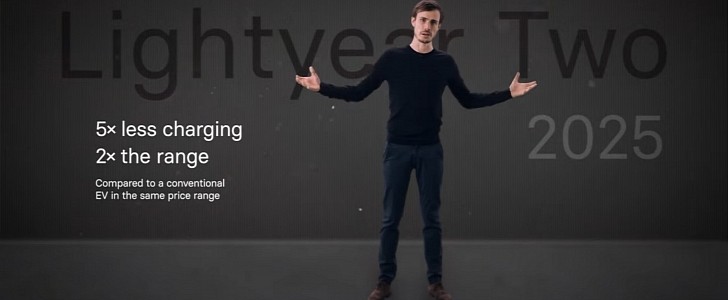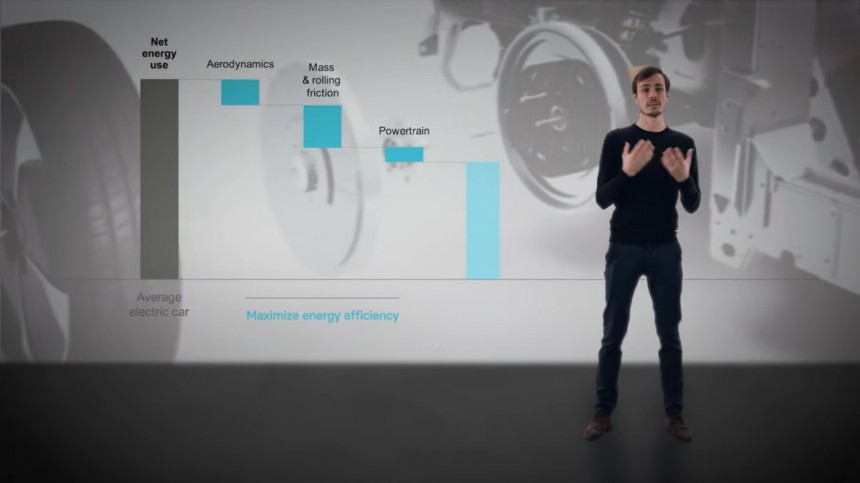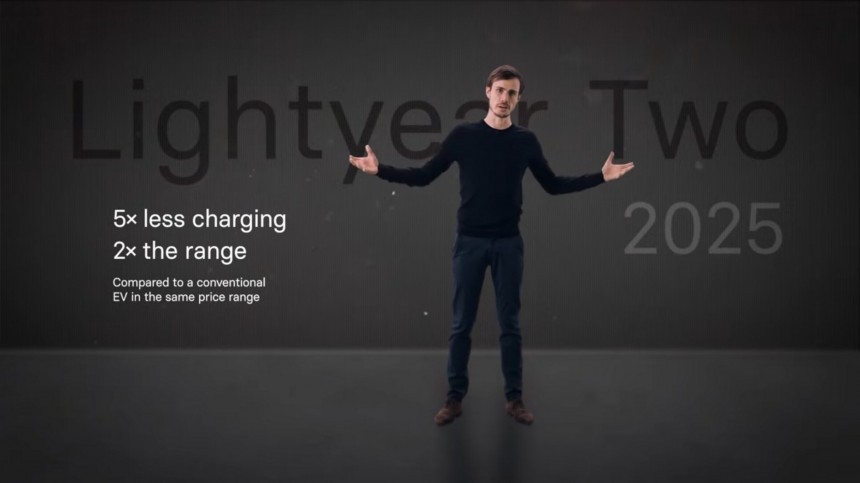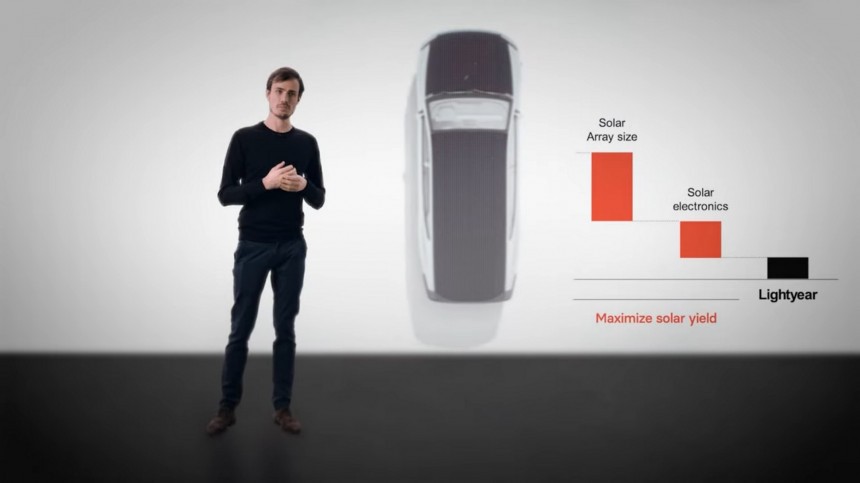We told you back on July 20 Lightyear’s second car would arrive by 2024. A new press release from the company disclosed more info about that car: it will be called Lightyear Two, will start at €30,000 ($33,916 at the current exchange rate), and LeasePlan will lease 5,000 units. However, there’s so much more to the story we could not limit it just to that.
Lex Hoefsloot shot a video to tell us more not only about Lightyear’s second car but also about the company’s plans. His vision for the Lightyear Two even gave us the impression that the affordable solar car will be substantially better than the Lightyear One for a fraction of the price. Considering each of the 946 units of the Lightyear One will start at €150,000, that fraction is one-fifth.
The explanation for that is simple: technology evolves and does that pretty quickly. Lightyear will also learn lessons with the One development and production. That is another opportunity for the Two to be an improved product. The company is perfecting all three pillars of energy efficiency: aerodynamics, mass, and powertrain efficiency. More than that, it is creating a virtuous cycle with these three factors.
With better aerodynamics, the vehicle does not need a mighty motor or a massive battery pack to move around. With that, the car has less weight and can travel further with the same battery pack, or it can adopt a smaller one for the same range, saving weight once again. If the battery pack is smaller, there are gains in aerodynamics. As you can see, multiple factors can help create a more efficient vehicle. Hoefsloot said his company is making sure it takes advantage of them.
Thanks to these efforts, Lightyear has managed to create a car that is two times more efficient than any other EV currently for sale. However, the main difference Lightyear presents compared to other companies is that it does not want to waste the sun shining on its cars’ bodies: it wants to harness this energy and put it to work.
That idea emerged a long time ago. Hoefsloot remembered that Lightyear was born after Stella won the World Solar Challenge four times in a row in the Cruiser Class, starting in 2013. This EV was considered the first family solar car because it could carry four people, including the driver, and was road-legal. The Solar Team Eindhoven – responsible for creating Stella at TU Eindhoven (Eindhoven University of Technology) – was the origin of Lightyear.
The CEO mentioned that not to brag about his team’s titles but rather to tell an interesting anecdote about the support combustion-engined cars that his team used. Instead of having the advantage of stopping less than electric cars, they had to make more stops for refueling than the solar car. That gave the Solar Team Eindhoven the certainty that Stella was the forerunner of more convenient vehicles. This is why the Lightyear One was born.
Although Lightyear promises the Lightyear Two will need five times fewer charging sessions and twice as much range for the same battery pack capacity, those are the numbers the Lightyear One currently presents. The goal for the affordable solar car is that it eventually becomes energy positive by delivering more power than it actually needs.
That opens an entirely new perspective for electric cars. The current ones can work as moving power banks. Those with more efficient embedded solar panels may generate energy in power shortage situations and still help buy some groceries. That makes a lot of sense. Cars parked in open spaces can do way more than just sit there waiting to be driven again.
As far as we know, Lightyear is working solely with the technology that is currently available. If it could use solid-state batteries right now, it could reduce the size of the battery pack in the Lightyear One in half. Just imagine what the company could do in such a scenario. Coincidence or not, solid-state batteries are expected to first reach the market by the same year that Lightyear Two will see the light of day.
Although the perspectives are bright, many elements in the industry have to improve, such as solar cells. If they do not evolve as much as Lightyear expects, it may not be possible for Lightyear Two to become energy positive.
That does not seem to be a problem for Lightyear. If the company is pursuing precisely that goal, it will eventually achieve it with the Lightyear Three, Four, or Five. When it does, the Dutch company will confirm something Makoto Uchida told Automotive News: electric cars are not just about how we travel more efficiently. They will define how we deal with energy. Lightyear seems to be perfectly aware of that.
The explanation for that is simple: technology evolves and does that pretty quickly. Lightyear will also learn lessons with the One development and production. That is another opportunity for the Two to be an improved product. The company is perfecting all three pillars of energy efficiency: aerodynamics, mass, and powertrain efficiency. More than that, it is creating a virtuous cycle with these three factors.
With better aerodynamics, the vehicle does not need a mighty motor or a massive battery pack to move around. With that, the car has less weight and can travel further with the same battery pack, or it can adopt a smaller one for the same range, saving weight once again. If the battery pack is smaller, there are gains in aerodynamics. As you can see, multiple factors can help create a more efficient vehicle. Hoefsloot said his company is making sure it takes advantage of them.
That idea emerged a long time ago. Hoefsloot remembered that Lightyear was born after Stella won the World Solar Challenge four times in a row in the Cruiser Class, starting in 2013. This EV was considered the first family solar car because it could carry four people, including the driver, and was road-legal. The Solar Team Eindhoven – responsible for creating Stella at TU Eindhoven (Eindhoven University of Technology) – was the origin of Lightyear.
The CEO mentioned that not to brag about his team’s titles but rather to tell an interesting anecdote about the support combustion-engined cars that his team used. Instead of having the advantage of stopping less than electric cars, they had to make more stops for refueling than the solar car. That gave the Solar Team Eindhoven the certainty that Stella was the forerunner of more convenient vehicles. This is why the Lightyear One was born.
That opens an entirely new perspective for electric cars. The current ones can work as moving power banks. Those with more efficient embedded solar panels may generate energy in power shortage situations and still help buy some groceries. That makes a lot of sense. Cars parked in open spaces can do way more than just sit there waiting to be driven again.
As far as we know, Lightyear is working solely with the technology that is currently available. If it could use solid-state batteries right now, it could reduce the size of the battery pack in the Lightyear One in half. Just imagine what the company could do in such a scenario. Coincidence or not, solid-state batteries are expected to first reach the market by the same year that Lightyear Two will see the light of day.
That does not seem to be a problem for Lightyear. If the company is pursuing precisely that goal, it will eventually achieve it with the Lightyear Three, Four, or Five. When it does, the Dutch company will confirm something Makoto Uchida told Automotive News: electric cars are not just about how we travel more efficiently. They will define how we deal with energy. Lightyear seems to be perfectly aware of that.












